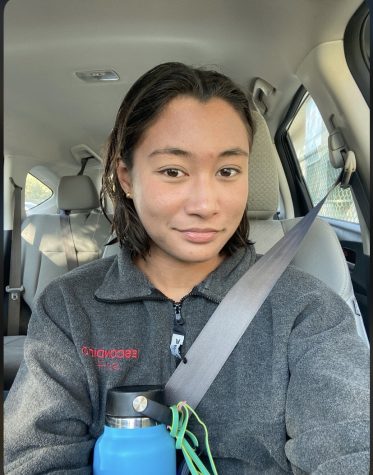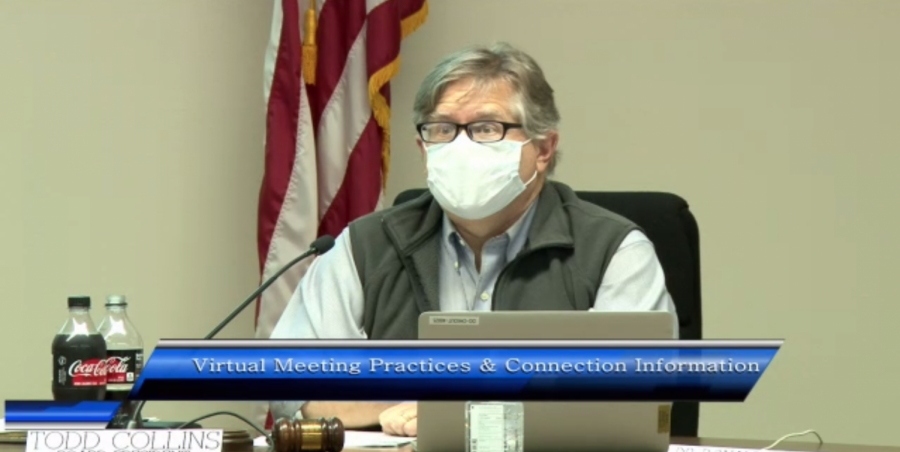The double-edged sword of in-person learning: Palo Alto elementary school students return to campus
Todd Collins speaks at the PAUSD board meeting to discuss the return of in-person learning
Schools across the world, the country, and the state are starting to reopen, but at what cost? Is it safe?
These are just some of the questions that Palo Alto Unified School District (PAUSD) has to answer.
“I understand there is a need to return to school, but we need to be clear that there will most likely be COVID cases, and so we need to do all that we can to make sure it’s as safe as possible,” said a PAUSD elementary teacher.
PAUSD plans to send students back in waves and has already started with kindergarten and the first grade on Oct. 12. This first wave was followed by a second with second and third graders on Oct. 26 and then the fourth and fifth grade two weeks later on Nov. 9. Middle and high school students are not set to return to in-person learning until January of 2021.
Elementary students choosing to go back will do hybrid learning. Hybrid learning consists of two to three days in-person, with the remaining days of the week distance learning. Families can also choose to do full distance learning.
According to Palo Alto Online, the board unanimously decided to reopen schools despite the fact that 90% of PAUSD’s elementary teachers said that they did not feel comfortable returning to in-person learning. This decision is one that will impact teachers and students alike.
One fifth-grader at Escondido Elementary School says, “I [would] feel very unsafe [going back] because I have asthma. I’m scared of getting COVID-19 because I don’t know what will happen.” On the other hand, distance learning is hard, explains the same student: “When I learn online, I try to be really attentive because Zoom is very tiring…in person, it’s not very tiring because you actually get to see [people]. Everyone’s moving around. I like going in person. If it was safe right now, I would be going in person, but I can’t go back because I’m high risk.”
For some students, the return to in-person learning will mean a better learning environment. Many students have parents that work long hours and that can’t be home to supervise and support their children throughout the school day. For these students, there isn’t much of a decision to make—the risk of in-person school is well worth it.
Even so, in-person learning won’t come without its challenges. Palo Alto Educators Association (PAEA) president, Teri Baldwin, explains, “The desk shields the kids got are kind of flimsy and poor quality. I’ve been told that they reflect too much. They distort the kids’ vision when they look through them. They can’t see the SmartBoard very well with all the windows open because it’s bright–but the main thing is it’s distorting their vision.”
However, desk shields aren’t the only obstacle getting in the way of teaching and learning.
“Talking through a mask and face shield makes it difficult for others to hear. With the [personal protective equipment], communication is challenging. It’s exhausting talking all day through a shield and face mask.” said a teacher at Escondido Elementary School.
Even with all of the obstacles of in-person learning, the kindergarteners and first graders had a mostly positive start to the return to school. At the first in-person board meeting in months on Oct. 13, Superintendent Don Austen reflected on one of his “first day” visits to the elementary schools. He said, “We went over to Ohlone and pulled up in the front parking lot, and the kindergarten kids were outside playing, and we got to hear little kids laughing and—wow—that was flat out emotional [be]cause we have been silent for too long.”
There were more positive reports from Fairmeadow Elementary School principal Iris Wong who said, “All of our kinders and our first graders did a phenomenal job of keeping their masks on throughout the day and did a phenomenal job of washing their hands, using the restrooms, maintaining social distancing, and using hand sanitizer whenever possible.”
Students returning to school in person are delighted too.
Duveneck Elementary School principal, Leslie Crane, said, “I got an email from one of our kinder parents whose son came home and said ‘I want to go to school on Saturday and Sunday too. I had the best time ever today at school!’ Do we have a lot of things to work on and improve upon? Absolutely. We have not perfected everything,” Crane said, “There [are] many things that we need to work on and improve upon, but to have a positive start, to watch these amazing teachers and students in the classrooms, to have the parent support within the community– means more than anything.”

Serafina Cortez '23 is the Editor of Opinions for Counterpoint. When she's not writing, you can find her reading, playing water polo, or Duolingo-ing.


